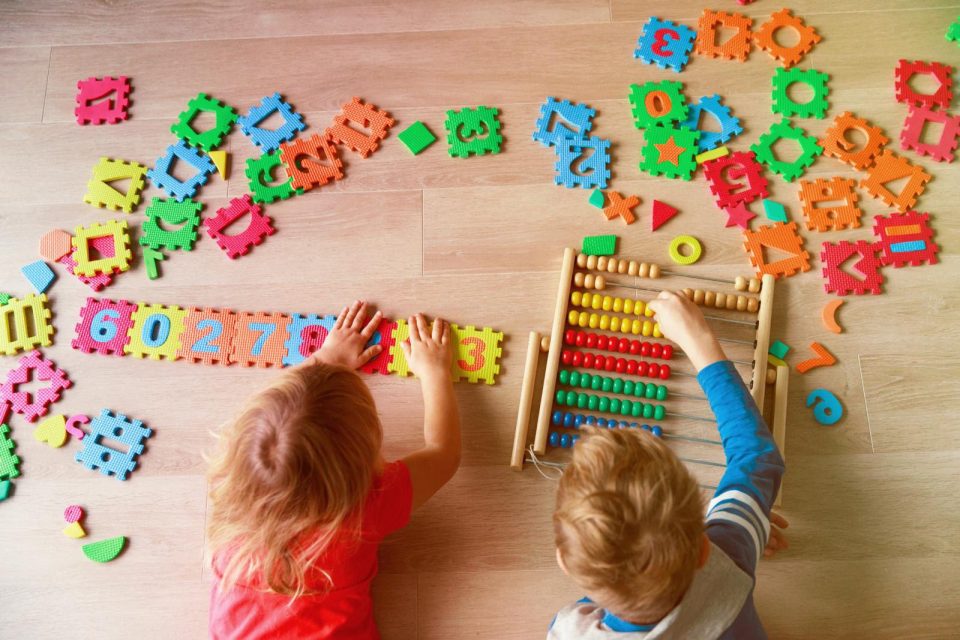
The coronavirus pandemic interrupted the education of millions of students across the country and progressing in math class proved to be a particular struggle, according to national and local data.
There are many causes for this decline in mathematics grades, according to Patrick Quinn, a Parenting Expert at Brainly, the world’s largest online learning community used by over 350 million students, parents, and teachers monthly.
“Parents are likely less comfortable drilling math problems at home as they are with helping in reading. Math can also be especially tough to learn virtually. Thankfully, there are many things parents can do to help instill a love and appreciation for math from a young age that will set them up for success down the road,” says Quinn, who’s also a former educator and father of three school-age children.
Here are seven tips for parents to get their kids excited about math and encourage them to use it on a daily basis:
- PLAY MATH GAMES AT HOME. There are many games your child can play that involve math. Beginning in the elementary years, students can learn to enjoy math by playing games such as chess, dominoes, cribbage, checkers, Set, Monopoly, Yahtzee, and backgammon. From there, they can move onto more challenging math games like Sudoku, which is perfect for middle-schoolers.
- READ BOOKS THAT INCORPORATE MATH. More and more schools are starting to integrate diverse subject areas into the curriculum so that students can make clearer connections. But how do you include math in a history or English class? One way is to read books in which the main characters solve a problem using math or logic. Examples include One Hundred Hungry Ants by Ellinor J. Pinczes, The King’s Commissioners by Aileen Friedman, and Anno’s Three Little Pigs by Mitsumasa Anno and Tuyosi Mori.
- TAKE AN INTEREST IN YOUR KIDS’ MATH HOMEWORK. Begin each math homework session by asking your child to explain what they’re supposed to do. By his or her response, you’ll know if they can do the assignment alone or if they need help. If you’re not able to help your child with the math homework, find an online learning resource that can provide straightforward, step-by-step walkthroughs. A great (and free) example of this is Brainly’s Math Solver, which was also created to help parents keep their ‘genius mask’ on even if they’re just as stumped as to their kids when it comes to remembering mathematical formulas. “When it comes to math studies, it really is an excellent tool to help students and parents go from questioning to understanding,” says Quinn.
- FIND OPPORTUNITIES FOR YOUR CHILD USE MATH EVERY DAY. Encourage your child to solve problems involving math outside of school. In the grocery store, ask him or her to figure out the price of four cans of tuna fish. In the car, ask how long it will take to travel to your destination based on your speed. In the toy store, ask your child to calculate the price of a discounted toy and how long it will take them to save up their allowance to buy it.
- BUY A CONVERSION CHART. It’s an easy way to engrain the conversion tables of kilometers to miles, grams to ounces, or liters to gallons. They’re skills that don’t come up often but are extremely handy to know.
- BE AN EXAMPLE. Many adults say they hated math in school, according to national polls. If you are one of them, be careful that you don’t communicate that attitude to your child. It can cause math anxiety, which sadly is contagious. Help your child improve his attitude toward math by showing him that you are confident when completing routine tasks like counting money from a school fundraiser, estimating the cost of a purchase, or completing your tax return.
- POINT OUT THE MATH IN EVERYDAY LIFE. From figuring out how many ounces are in a cup while baking a cake to calculating the difference between time zones before calling a relative, you can show your child that math is everywhere around them. You can also point out the importance of math in different professions including architecture, medicine, fashion design, restaurant management, astronautics, and computer programming. These small acknowledgments can make a difference and even get your child excited about math.
“We naturally encourage our children to read, write, and speak outside of school. Yet we often leave learning math skills to 45 minutes a day in the classroom. Like everything else, your child’s skills, confidence, and excitement about math will improve with daily practice, support, and encouragement,” says Quinn.

Leave a Reply